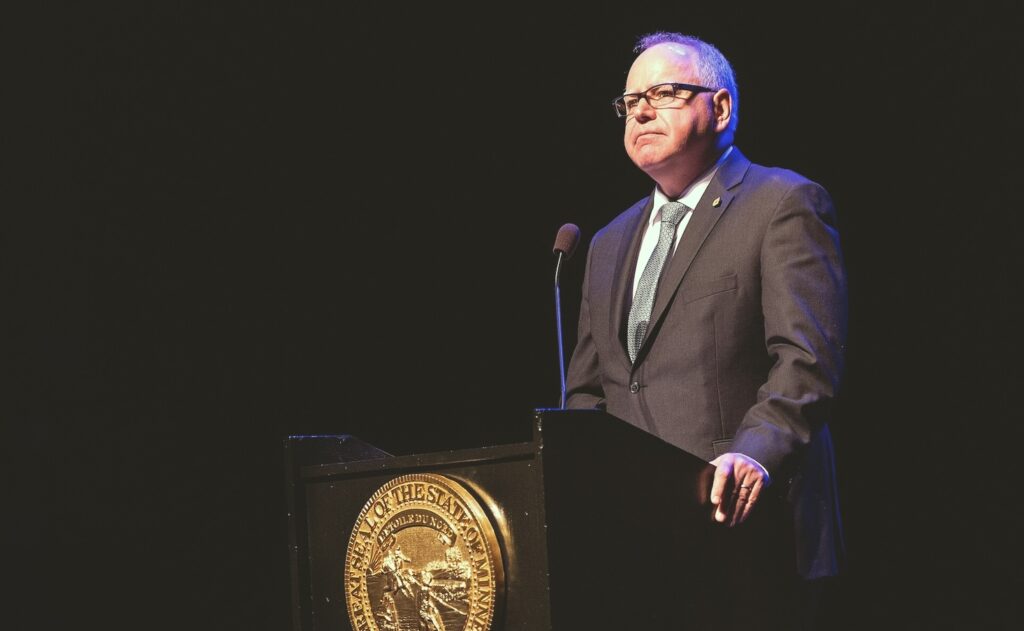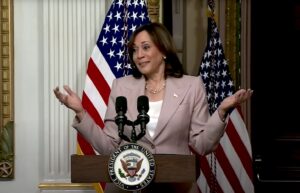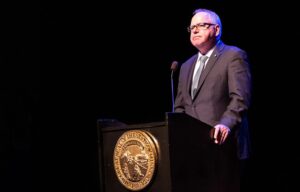Harris VP pick Walz funneled education dollars to liberal mandates, not academics
Newly minted Democrat vice presidential nominee Tim Walz’s record as Minnesota governor reveals a totally committed social justice warrior who spent more money on education but didn’t deliver…

Newly minted Democrat vice presidential nominee Tim Walz’s record as Minnesota governor reveals a totally committed social justice warrior who spent more money on education but didn’t deliver results.
That’s according to Minnesota conservative think tank the Center for the American Experiment (CAE).
While Minnesota K-12 test scores remain above national averages, the gap has narrowed significantly under Walz, CAE said.
“Minnesota student scores on the state’s reading and math tests (the Minnesota Comprehensive Assessments, or MCAs) have also declined significantly since 2019 [when Walz became governor], with now for the first time since the MCAs have been administered majorities of K-12 students not meeting grade-level standards in both subjects,” reports the center’s Catrin Wigfall.
Charts supplied by CAE via the National Assessment of Educational Progress and the Minnesota Reformer show the drop in tests scores coincided with Walz’s inauguration as governor in Minnesota, and accelerated during the pandemic.
The lack of progress in academic achievement since the pandemic ended stems in part from the fact that newly added funds for K-12 education are going to progressive policy priorities instead of making up for learning losses created by Walz, said the MinnPost.
While Walz, who was once a teacher, celebrated an additional $2.2 billion in state education funding in June 2023, bringing the total state K-12 budget to $23.2 billion, “the Minnesota School Boards Association, the Association of Metropolitan School Districts and others estimate that up to half the $2.2 billion had already been earmarked for as many as 65 new mandates, ranging from free meals for all students to menstrual products in school restrooms,” the MinnPost reports.
Per pupil spending in Minnesota has gone from about $13,200 to over $16,000 under Walz, even as test scores have declined rapidly, according to a chart by CAE.
Wigfall notes budget numbers in Minnesota are difficult to find and unreliable, with differing figures depending on who is doing the counting.
“I have found that per pupil spending numbers just vary,” Wigfall told The Lion, adding that they depend on whether the state, U.S. Census Bureau or school district is supplying them.
In response to Walz’s latest State-of-the-State address, Minnesota Republicans noted that despite the extra resources devoted to education and a budget surplus in Minnesota, kids who were in kindergarten when the pandemic started and are now in 4th grade are still a full year behind in reading and math.
CAE reported in June that Minnesota’s national academic ranking dropped to 19th after ranking as high as 7th in 2021.
“The percentage of Minnesota 4th graders not meeting NAEP’s reading benchmarks increased from 62% in 2019 to 68% in 2022. Minnesota 8th graders not meeting NAEP’s math benchmarks increased from 56% to 68%,” said CAE’s Wigfall.
The rapid decline of test scores under Walz can be almost wholly attributed to COVID-19 lockdowns instituted by the governor.
Walz closed K-12 public schools in Minnesota in mid-March 2020 because of the pandemic and only reopened schools for in-person learning on Jan. 21, 2021, the day after President Joe Biden was inaugurated, according to Minnesota Public Radio.
CAE cited a Hoover Institution report that ranks Minnesota students’ average individual economic losses because of pandemic school closures at over 7% annually, making it the 8th greatest lifetime income loss among the states.
In addition, Wigfall said there are concerns about new social studies standards that include Critical Race Theory. Civics testing was removed by the legislature previously.
“I do note that there was a huge overhaul of the state’s social studies standards. And there was the passage of ethnic studies, which we believe does have the critical social justice ideology components,” Wigfall told The Lion.
In an interview at the Minnesota State Fair in 2022, Walz tried to claim 80% of students missed fewer than 10 days of in-person learning during the pandemic. His office later said his comments were taken out of context, because he only meant during the 2021-22 school year, when the pandemic was largely over.
“However, in watching the entire nearly eight-minute interview on WCCO-TV broadcast live at the Minnesota State Fair on Sunday morning, at no time was the 2021-22 school year specified. In fact, the interviewer clearly seemed to be talking specifically about the initial round of school closings beginning in March of 2020,” said KSTP ABC News.
But even the normally liberal Minneapolis Star Tribune concluded if Walz really meant just the 2021-22 school year, the governor provided no data to back up his claims. In fact, Reason called Walz “a COVID-19 tyrant.”
Indeed, Walz set up a COVID-19 lockdown “snitch line” that apparently generated over 10,000 tips to law enforcement about people violating the governor’s strict lockdown requirements “for things like playing basketball in a park, walking their dogs, and throwing small parties,” reported Alpha News.
Nearly two-thirds of Minnesotans think K-12 education nationwide is going in the wrong direction, reported CAE via a Morning Consult poll, with 51% thinking it’s on the wrong track in Minnesota.
But as CAE notes, nine out of 10 Minnesotans think their students are at grade level in reading and math. If they knew the truth, says CAE, the number of “wrong track” answers would likely be higher.
Walz signed into law a program making attendance at a state university tuition-free for any student from a family making under $80,000, but Walz won’t support a scholarship program to provide state funding for poor kids trying to get out of failing Minnesota public schools.
“Gov. Tim Walz does not have a history of supporting educational choice in Minnesota,” notes EdChoice. “While he has not explicitly stated he would not support a proposal, he is heavily supported by Education Minnesota, an interest group that openly opposes educational choice. He also has a history of declining meetings with educational choice parent advocates.”
At the same time Walz has pushed a $1.7 billion housing system that would give Minnesotans making less than $60,000 a year a voucher for rent.
The $2.2 billion in additional education spending – half of which is being used on ultra-liberal mandates – and the $1.7 billion in rental assistance were attempts by Walz and the Democrats to use up a one-time $17.5 billion budget surplus on progressive priorities.
“I can speak to the track record – [Walz’s] track record as a governor – and let the data speak for itself. It shows that academic excellence doesn’t appear to be a priority,” Wigfall told the Lion.



